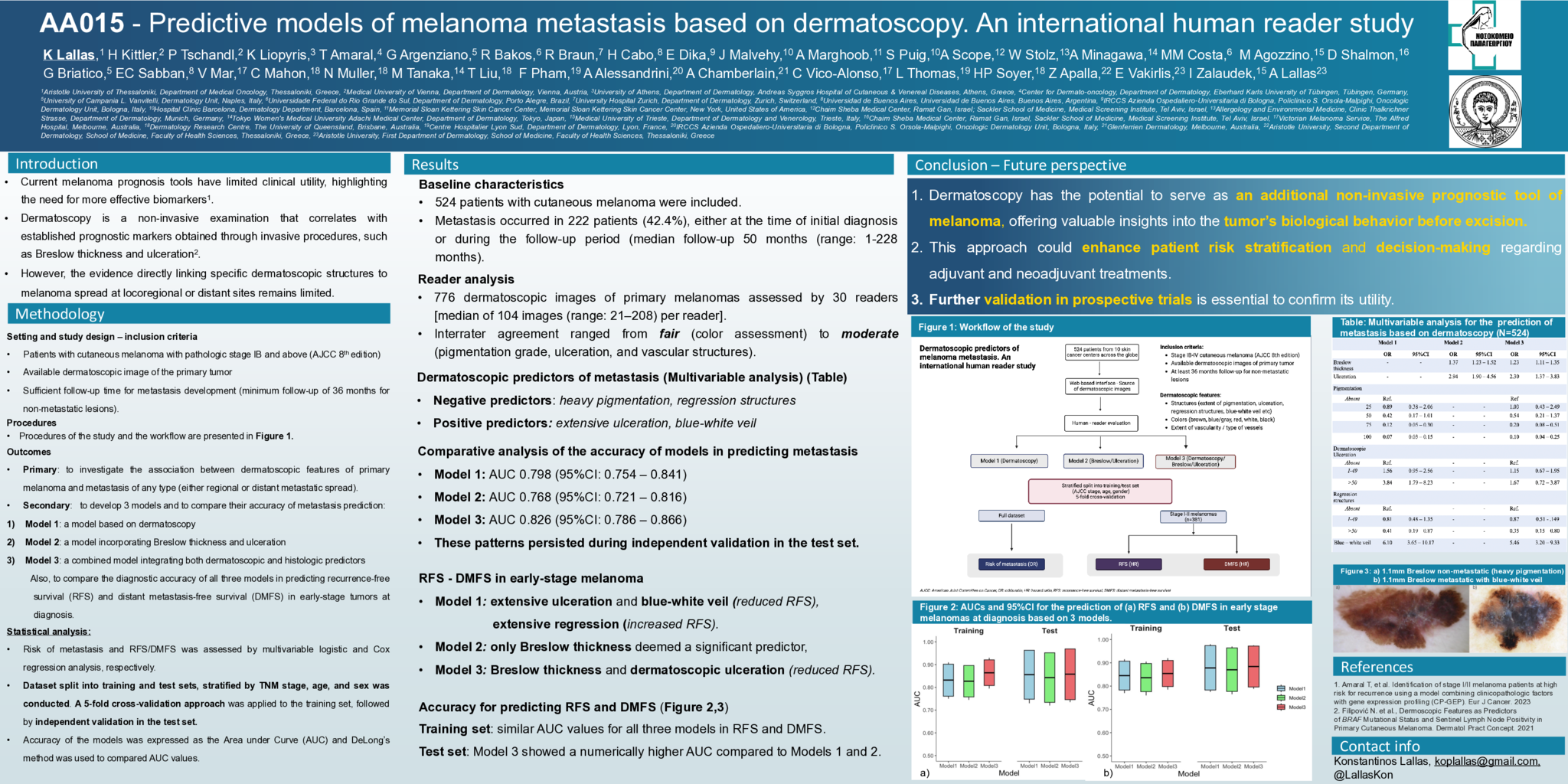Background: The value of dermatoscopy in predicting melanoma metastasis is currently unknown.
Methods: This retrospective study included patients with cutaneous melanoma (stage IB and above) from ten skin cancer centers. Eligibility required dermatoscopic images of the primary tumor and sufficient follow-up for metastasis assessment. Dermatologists evaluated images based on predefined criteria including structures, colors, and vessels. The primary outcome was the association between dermatoscopic features and melanoma metastasis. Secondary outcomes included model accuracy in predicting recurrence-free survival (RFS) and distant metastasis-free survival (DMFS) in early-stage melanomas. Three models were developed: (1) dermatoscopic features only, (2) histologic features only, and (3) a combination of both. The dataset was stratified by TNM stage, age, and gender, then split into training and test sets. Prognostic accuracy was assessed using multivariate logistic regression for metastasis risk and Cox regression for RFS and DMFS.
Results: A total of 776 dermatoscopic images from 524 patients were evaluated by 30 readers, generating 3346 assessments (median 5 reads per image, range 1–26). At a median follow-up of 50 months (range 1–228), 222 of 524 patients (42.4%) developed metastases (67 locoregional, 155 distant). In multivariable analysis, extensive ulceration and blue-white veil were positive predictors of metastasis, while heavy pigmentation and extensive regression were negative predictors (model 1). In the test set all models showed a similar performance. Extensive ulceration and blue-white veil were also associated with lower RFS (HR 2.84, 95% CI 1.86–4.34; HR 1.24, 95% CI 1.01–1.52, respectively), whereas extensive regression correlated with higher RFS (HR 0.42, 95% CI 0.15–0.97). Similar predictors and AUC values were observed for DMFS.
Conclusion: Dermatoscopy, a non-invasive method, may offer valuable prognostic insights into melanoma’s biological behavior before excision and help guide therapeutic decisions. Prospective validation in future trials is essential.
- 11 προβολές




